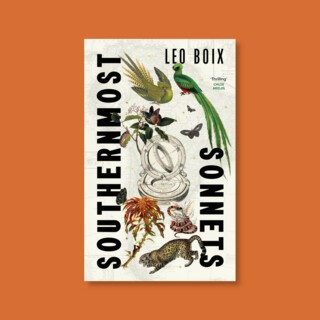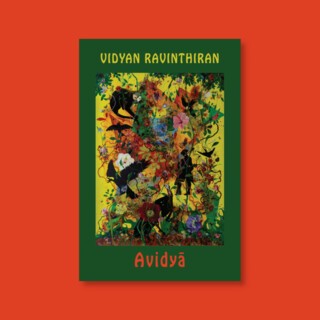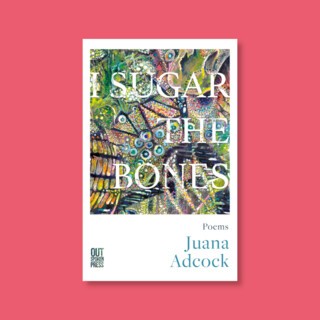Taking a lobster for a walk: an extract from Fiona Sampson’s Starlight Wood
Posted by Fiona Sampson

‘Romanticism isn’t a cultural artefact; it’s a way for thought to move,’ writes poet and biographer Fiona Sampson in her latest book Starlight Wood, a hybrid work of group biography, cultural history and place writing that explores the relationship between the Romantics and the natural world, and how their work continues to shape Britain’s idea of itself today, through a series of ten walks, from the Mull of Kintyre to the Isle of Wight. In this extract, Sampson walks from Benjamin Britten’s Red House in Aldeburgh, Suffolk, reflecting on Coleridge, transcendental philosophy and Gérard de Nerval’s pet lobster.
I’m coming to the conclusion that my method on these walks is also a kind of dialectic. Now, for example, I’m crossing North Warren towards the sea, but I’m also thinking as I walk. The inner and outer worlds of my experience snag, or slip past each other. Far down the road, a white car seems to grow – yet dwindle – as I wait for it to pass. Is it flashing an indicator, or is that the sun glittering on its bonnet? This east coast light has a neuralgic quality. For Coleridge, ‘Poesy’ or ‘Art’ don’t simply describe some element of, say, the natural world: the coconut smell of gorse blossom, or the golden-green woodpecker, Picus viridis, which just fired between the trees ahead of me. Rather, poetry and art do as nature does and, in both world and mind, beauty is an essential, because organic, formal principle: ‘It is, in the abstract, the unity of the manifold, the coalescence of the diverse; in the concrete, it is the union of the shapely (formosum) with the vital.’
As the Coleridge scholar Seamus Perry points out, this is a response to F. W. J. von Schelling’s 1807 essay, ‘On the Relation of the Plastic Arts to Nature’. The philosopher’s System of Transcendental Idealism, published in 1800, had already deeply influenced Coleridge who, the year before he delivered ‘On Poesy or Art’, had published Biographia Literaria. This great two-volume self-portrait of the artist as thinker is substantially a reckoning with his personal library of theoretical and philosophical influences, and it includes large passages of Schelling’s thought – and sometimes his actual words. Thus, Coleridge writes about Schelling’s dialectic:
In the same sense the transcendental philosopher says; grant me a nature having two contrary forces, the one of which tends to expand infinitely, while the other strives to apprehend or find itself in this infinity, and I will cause the world of intelligences with the whole system of their representations to rise up before you.
This bright April morning, the coast road is busy with people and dogs. Along the shingle beach towards Thorpeness trot old ladies with shivering terriers, dogs with studded collars walked by local heroes in biker jackets, a big guy in leathers with a pompom shiatsu, a red setter who tugs at his leash. They do ‘rise up’ like ‘representations’, and I miss my own dogs, at home on the other side of the country. But witnessing this flamboyant promenade, for once, makes me think of that incorrigible Parisian Gérard de Nerval (1808–55) walking his pet lobster.
Which was controversial stuff, at the time. The lobster’s very existence has been both doubted and defended. Between bouts of madness Nerval’s own take on the matter, as reported by Théophile Gautier, his fellow Petit Cénacle (Young Romantic), was that it was a question of the freedom to choose:
Why should a lobster be any more ridiculous than a dog? Or a cat, or a gazelle, or a lion, or any other animal that one chooses to take for a walk? I have a liking for lobsters. They are peaceful, serious creatures. They know the secrets of the sea, they don’t bark, and they don’t gobble up your monadic privacy like dogs do. And Goethe had an aversion to dogs, and he wasn’t mad!
Hmm: well taking a lobster walking through the streets of Paris is a deliberative, not an unconscious act (though it is unconscionably cruel. The lobster is not in its natural environment), and there evidently was a real creature at one stage at least, which Nerval rescued from the pots at La Rochelle and named Thibault. Whether its later instantiation was a living creature or a fantasy, I think this proto-surrealist was offering up his lobster, to Paris as it were, as a symbol of his own Romantic artistic nature: setting it loose – though not that loose – in the world like any other artwork to do its work of symbol and integration. Next stop, the signed urinal.
Crabs figure in the zodiac, lobsters in the Tarot. Richard Holmes, biographer of the Romantics, points out that the eighteenth card in the Major Arcana, the Moon, that symbol so associated with the world of dream, is pictured drawing a lobster out of the watery depths to join – yes – two dogs howling on the shore. As if what could come crawling out of our unconscious, as out of the deep ocean, were bound to be grotesque. And here on cue are the fishermen’s huts, wooden doors open wide onto refrigerated glass display counters, tills, chest freezers and chopping boards pink with fish guts. They stand above the tideline on Aldeburgh’s terraced beach, snug against the promenade of Crag Path, all tar-black wood and tarred roofs. I don’t quite want to think how the lobsters stirring in the fishtanks I glimpse within them wear an exoskeleton that locks in all expression – and yet the creatures can feel.
Beyond the huts, today’s shallow breakers seem like small gestures made without a care in the world. But their shingle fetch roars all the way north to Thorpeness and south, past Aldeburgh, to Shingle Street. I grew up with this sound. Even at the height of summer, my childhood shoreline heaved and settled, grumbled and exhaled with the Atlantic. It muttered a continual warning: the ocean is dangerous, even when the sun’s shining.







